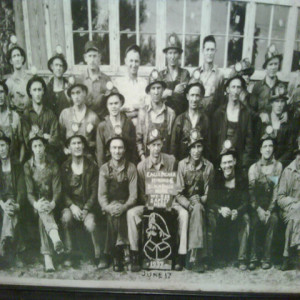
On this day in labor history, the year was 1937. That was the day the National Labor Relations Board began hearings on an unfair labor practice brought by the International Union Mine, Mill and Smelters. Mine, Mill had been fighting the union busting tactics at Eagle-Picher Lead Company. The union had been organizing lead and zinc miners in the Tri-State area of Kansas, Missouri and Oklahoma. During the Great Depression, they built the union by emphasizing safer working conditions, stressing the hazards of silicosis and tuberculosis. In their book, Deadly Dust: Silicosis and the Politics of Occupational Disease, Gerald Markowitz and David Rosmer note that one of Mine Mill’s demands included the elimination of the company clinic. They argued it was used to target and fire diseased workers, rather than provide a safe work environment. Mine Mill also organized other area industries, to counteract the near total power of the mine owners in the region. When the union called a strike at area mines in May 1935, the area’s largest producer, Eagle Picher Lead moved quickly to force a lockout and establish a company union. During the hearings, the union was limited in its ability to raise health and safety issues. They did win reinstatement and back pay for workers fired during the strike. But the case brought national attention to silicosis in the Tri-State area. In a letter to Francis Perkins the following year, the head of the Cherokee County Central Labor Body hoped to secure legislation to compel the companies to install ventilation systems and safety devices. He noted the average life of a miner was 7-10 years, with many dying in 2 or 3 years. But a federal standard on silica was still decades away.
More Episodes
 2023-06-19
2023-06-19
 2023-06-18
2023-06-18
 2023-06-17
2023-06-17
 2023-06-13
2023-06-13
 2023-06-12
2023-06-12
 2023-06-11
2023-06-11
 2023-06-10
2023-06-10
 2023-06-09
2023-06-09
 2023-06-08
2023-06-08
 2023-06-07
2023-06-07
 2023-06-06
2023-06-06
 2023-06-05
2023-06-05
 2023-06-03
2023-06-03
 2023-06-02
2023-06-02
Create your
podcast in
minutes
- Full-featured podcast site
- Unlimited storage and bandwidth
- Comprehensive podcast stats
- Distribute to Apple Podcasts, Spotify, and more
- Make money with your podcast
It is Free
- Privacy Policy
- Cookie Policy
- Terms of Use
- Consent Preferences
- Copyright © 2015-2024 Podbean.com




